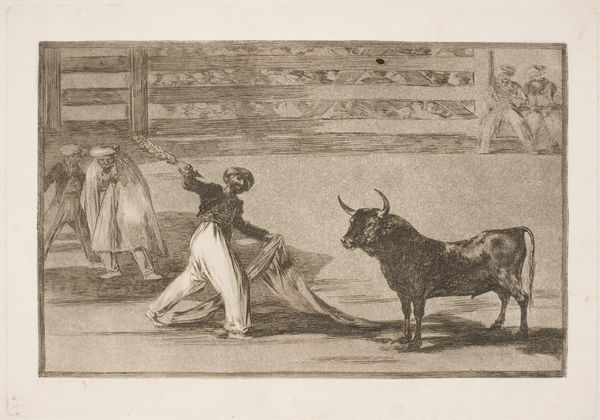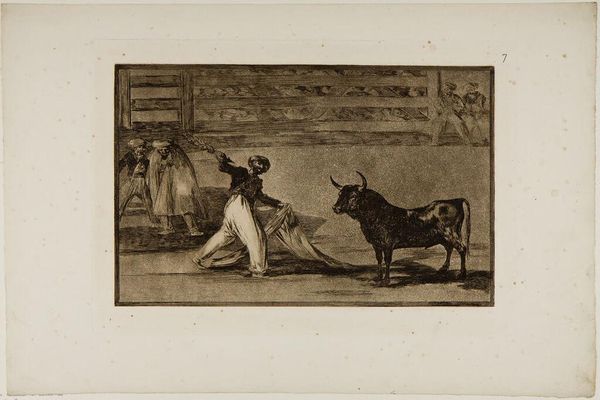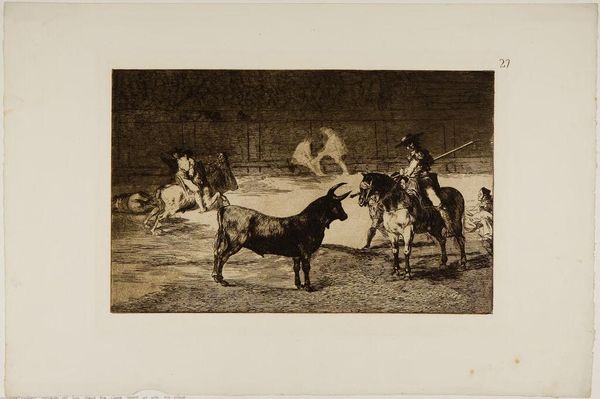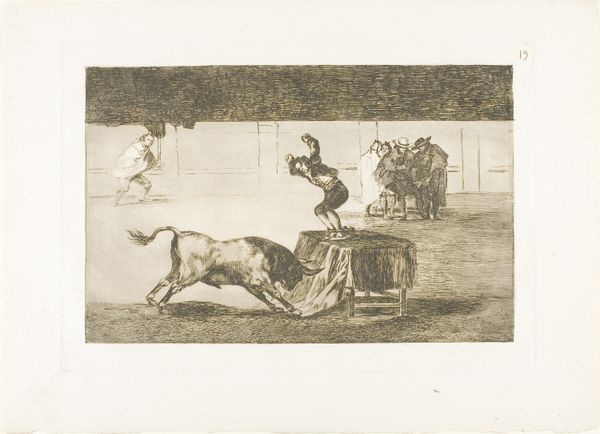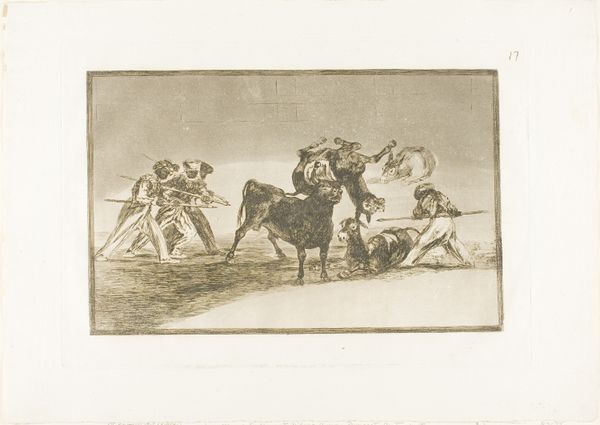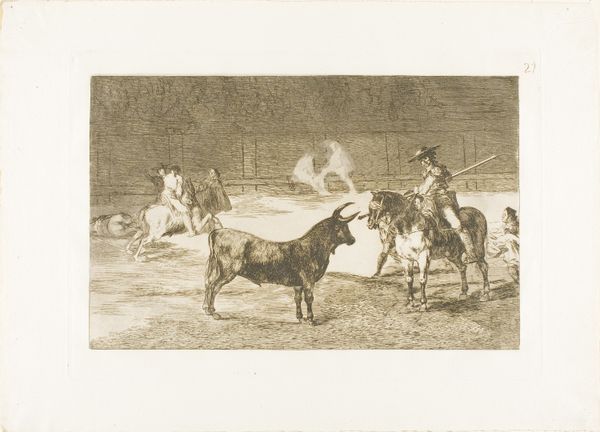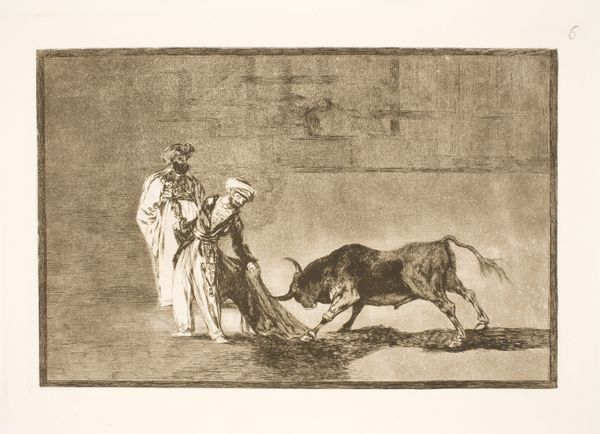
Origin of the harpoons or banderillas, plate seven from The Art of Bullfighting Possibly 1814 - 1816
0:00
0:00
drawing, print, etching, paper, engraving
#
drawing
# print
#
etching
#
paper
#
genre-painting
#
history-painting
#
engraving
Dimensions: 201 × 315 mm (image); 245 × 352 mm (plate); 320 × 445 mm (sheet)
Copyright: Public Domain
This etching, made by Francisco de Goya, presents an early form of bullfighting, focusing on the moment when harpoons, or banderillas, were first used. The bull, a symbol of untamed nature and virility, faces a combatant whose movements echo a dance of death. The cloth, manipulated to taunt the bull, is reminiscent of ancient ritualistic veils, tools that blur the line between man and beast. This recalls the Minoan bull-leaping frescos of Crete, where the bull was also a central figure. The origins of bullfighting may lie in similar prehistoric rituals. The bull's horns, symbols of power, evoke ancient beliefs in the bull as a deity or a sacred animal. Bulls were sacrificed in ancient Greece, and in Rome, bullfights were performed in honor of Mithras. Even today, the image of the bull, charged with symbolic meaning, resonates deeply within our collective memory, stirring primal emotions. In Goya's work, the bullfight transcends mere sport; it becomes a stage for the eternal confrontation between man and nature, culture and instinct. It's a spectacle that continues to evolve, carrying echoes of the past into the present.
Comments
No comments
Be the first to comment and join the conversation on the ultimate creative platform.
